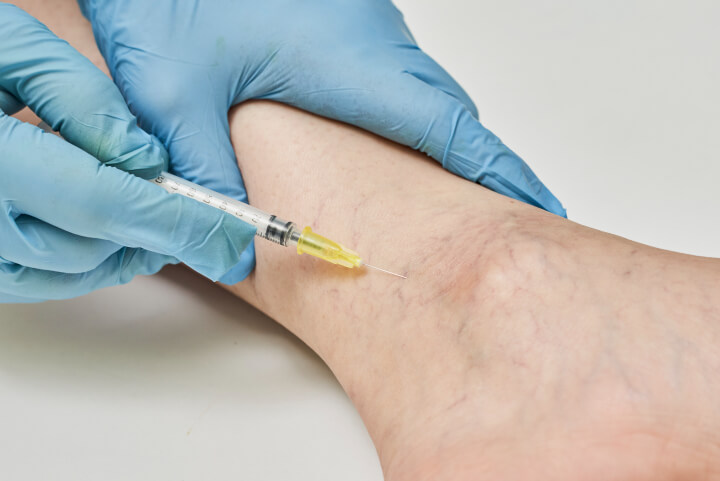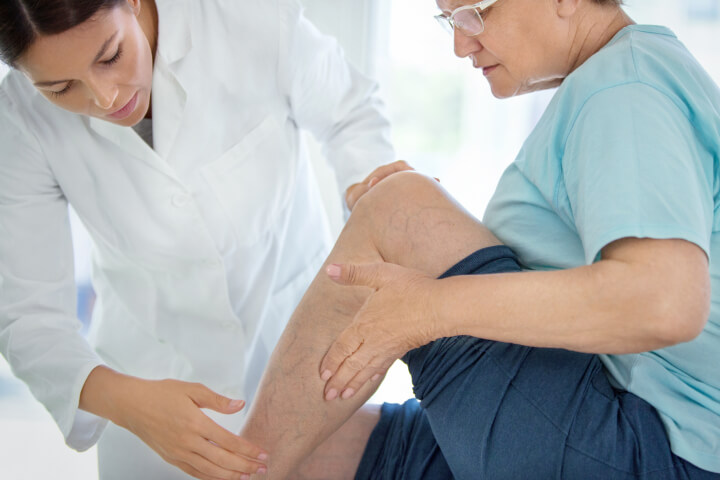Varicose and spider veins are swelling and twisted veins that most commonly occur on the legs. Women are more likely than men to have a varicose and spider vein. Pregnancy, aging, and obesity can all raise the chances of developing varicose and spider veins. Varicose and spider veins are generally harmless and don’t cause any health complications.
So how do people get varicose veins in the inner thigh? High blood pressure in the leg veins causes varicose veins. Varicose vein forms in a superficial vein near the skin's surface. The blood flows toward the heart through one-way valves in a blood vessel. Blood can accumulate when the vein wall is weakened or damaged. This occurrence results in bulging veins or superficial thrombophlebitis.
Varicose veins affect between 20 and 25 million people in the United States. They’re more common in women than in men. The valve in a healthy vein transports blood from the extremities back to the heart.
Veins are soft-walled blood vessels that transport blood from the lower leg veins to the heart. One-way valves in veins prevent reverse blood flow, but dealing against gravity can be imposing. Varicose veins form once the affected vein walls deteriorate or the valves malfunction.
The veins may become sedated, elongated, twisted, and thickened over time and under the strain of gravity. Venous reflux or chronic venous insufficiency is the reverse flow of blood exacerbated by injured valves.
Varicose veins are beyond 3 millimeters in diameter. Reticular veins, on the other hand, are 1 to 3 millimeters in diameter. Spider veins are less than one millimeters in diameter; they’re also referred to as thread veins. Varicose veins are generally not a severe vein disease.
They can be unpleasant and can cause phlebitis, blood clot, deep vein thrombosis, and, in rare cases, pulmonary embolism. In some cases, it may lead to pelvic congestion syndrome (PCS). It’s a severe disease affecting women. It happens once the hidden varicose veins form beneath the abdomen in the pelvic area and aren’t noticeable on the skin's surface.
People with varicose veins frequently complain of restless legs, especially at night when they’re in bed. In a study, approximately 30% of patients with varicose veins reported nocturnal restless legs. Restless leg syndrome is a symptom of restlessness and a desire to move the legs.
Varicose veins worsen over time and can probably result in a venous leg ulcer or venous eczema when left untreated. These are usually observed on the lower leg or ankle and contain open wounds that may not heal if not appropriately addressed. They can be excruciatingly painful and have a significant negative impact on one's wellbeing. A venous skin ulcer is a severe form of venous disease that requires urgent attention and treatment.
Read More: What Are the Best Vitamins for Varicose Veins?
Some people have no symptoms of these visible veins. When symptoms are present, people may feel tired, feel heavy, or have achy legs. After standing or sitting for an extended period, the symptoms may worsen. These symptoms may improve after resting and raising your legs.
Other symptoms associated with varicose veins are the following:
Bulging and enlarging veins — Varicose veins are swollen, raised veins that can happen anywhere on the leg but are most commonly found on the inner thigh and the calf or inner lower leg. These are frequently described as bulging or ropey in appearance.
Spider veins — These are small red or blue veins that are found near the skin's surface. The size of red or blue veins varies, but they’re usually web-like and branch out like a tree.
Burning or pulsating veins — These pertain to muscle cramping and veins that have a warm sensation.
Itching — An irritable rash and intense itching on or near the veins. It can result in extremely dry skin, which can be a form of eczema.
Swelling — It’s also known as edema or leg swelling, typically from around the ankle or in the feet. It’s often more noticeable after long periods of sitting or standing, and it’s particularly evident at the end of the day. Swelling frequently indicates a vein problem beneath the skin's surface.
Numbness — It’s defined as a lack of feeling or a tingling sensation.
Skin discoloration — Changes in skin color and discoloration in areas around an abnormal vein. They’re frequently brown, red, and shiny. Specific disorders can lead to skin lightening or hardening.
Leg pain — Severe softness of the veins, especially if they’re sensitive to touch.
Tired, heavy, aching sensation — Mostly a dull ache that worsens at night.
Bleeding — It may be triggered by a broken vein surface. In rare instances, a venous ulcer may be associated, which is among the most severe types of vein disease. It’s most commonly seen on the lower leg or ankle. Elevate the leg, add pressure to the bleeding site, and seek medical attention right away.
Diagnostic tests for varicose veins, in addition to a thorough medical history and physical examination, may include the following:
These large or severe varicose veins that go untreated can cause swelling, skin thickening, and non-healing skin sores.
Learn More: What Causes Varicose Vein Itching and What You Can Do About It

When the signs of varicose veins aren’t aggravating, treatment may not be advised. The three E's (exercise, elevation, and elastic compression) are preferred when necessitating treatment.
Elevation — Elevating the legs can relieve pain immediately. A doctor may also advise a patient to lift the legs above the heart for 15 minutes three or four times per day. It can reduce swelling. If standing or sitting for an extended period is mandatory, bending the legs a few times will promote blood circulation.
Elastic compression stockings — From the toes to the calves, elastic compression stockings can tighten these areas. They compress the leg veins, putting extra pressure on them and preventing a reverse blood flow. Compression stockings are beneficial if worn daily.
Exercise — It helps improve the blood flow through the legs and builds muscle strength. They can also encourage better circulation.
If the three E's don’t significantly alleviate worrisome symptoms, varicose veins treatments are available. However, it’s best to consult a vein specialist or a vascular surgeon to learn more about a suitable treatment option.
Sclerotherapy is the most standard way to treat spider and varicose veins. It involves injecting a solution to block the affected veins permanently. The solution allows the vein to scar shut, preventing blood from flowing through it.
The vein eventually shrivels and disappears into the body. Blood that used to flow thru the vein travels back to the heart via nearby normal, healthy veins. It’s an outpatient therapy with minimal recovery time.
Read More: A Complete Guide to Your Non Surgical Varicose Vein Treatment

While varicose veins are rarely life-threatening, they’re a primary concern for some people. At Vein Center Doctor, we offer non-surgical aesthetic therapies to help clients get rid of varicose veins. Our professional team recommends several treatments for damaged and abnormal veins in various parts of the body.
Schedule an appointment today and discover more about the best treatment for you.
Most Insurance is accepted for treatment